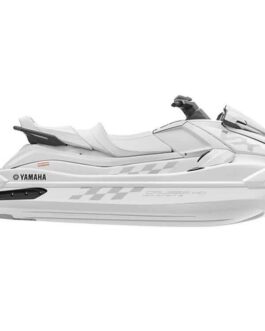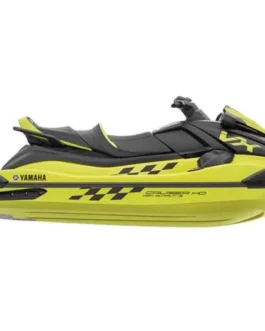Yamaha VX-C for Sale: A Purpose-Built Jet Ski
While many personal watercraft options aim to deliver performance and luxury, the yamaha vx c for sale was engineered differently. Because it targets utility over pleasure, it serves a highly specific market. Instead of focusing on entertainment features, Yamaha designed the VX-C to perform under demanding, repetitive use.
Why Choose the Yamaha VX-C Instead of a Recreational PWC?
Although other models may appeal with advanced displays, sound systems, or plush seating, the VX-C intentionally avoids them. Since commercial operations require efficiency and low maintenance, extra features would only increase cost and complexity.
Durability Over Decoration
Because the VX-C lacks luxury trim and soft finishes, it resists wear better. While recreational PWCs may require frequent cosmetic repairs, this craft maintains its function and appearance over time without those problems.
Cost-Efficiency and Long-Term Value
Since utility users care more about operating cost than visual flair, the VX-C keeps costs predictable. In fact, it consistently ranks among the lowest in total cost of ownership for its class. Therefore, organizations benefit more over time than with higher-priced alternatives.
Engine and Performance: Powered by Yamaha’s TR-1 HO
The heart of the VX-C is the Yamaha TR-1 HO engine—a naturally aspirated, three-cylinder, four-stroke power unit. Although this engine does not deliver high speeds like turbocharged models, it focuses on balance, fuel efficiency, and dependable output.
Consistent Power Delivery
Because the engine was built for endurance rather than thrill, it handles constant use without overheating or failing. While some personal watercraft engines suffer under rental conditions, the TR-1 HO holds up with minimal maintenance required.
Fuel Efficiency for Fleet Operators
In contrast to performance-focused PWCs that burn through fuel quickly, the VX-C provides a longer range. Therefore, fewer refueling interruptions mean higher profit margins in rental operations and patrol applications.
Hull and Construction: NanoXcel Material for Lightweight Strength
Although the watercraft avoids cosmetic upgrades, it does not cut corners on structural materials. Yamaha’s proprietary NanoXcel technology is used in the VX-C’s hull and deck. Because this material weighs less than conventional fiberglass but maintains rigidity, it reduces drag and increases strength.
Improved Maneuverability
With a lighter hull, the VX-C handles more responsively. While larger crafts may struggle in tight quarters, this unit navigates easily, making it ideal for marinas, docks, or fleet use.
Resistance to Damage
Since utility use often involves contact with debris, docks, or other machines, material strength is essential. The VX-C resists cracking and flexing over time, making it a long-term asset rather than a frequent repair issue.
Rider Safety and Control: Yamaha RiDE® System
Although designed for simplicity, the VX-C includes Yamaha’s exclusive RiDE® system. This dual-throttle mechanism allows for smooth acceleration and braking.
Reverse Throttle Functionality
Rather than relying solely on manual handling, the rider can use the reverse throttle to slow down or reverse direction quickly. As a result, tight maneuvers become much easier—even for new users.
Enhanced Control for High-Traffic Areas
Since rentals and work environments often involve crowded waterways, safety matters. RiDE® increases stopping control, decreasing the chances of collision or improper docking.
Minimalist Seating and Rider Positioning
Unlike consumer models that focus on ergonomic seats or backrests, the VX-C’s seat design stays utilitarian. Although this means reduced comfort during long recreational rides, it benefits commercial use.
Flat, Simple Seating for Multiple Riders
Because it’s designed for turnover—whether between renters or staff—this seating suits frequent mounting and dismounting. Additionally, it’s easier to clean, replace, or repair.
Stable Ride Geometry
Although stripped of comfort features, the hull geometry and seating layout still provide balance. Therefore, even without padding or grip enhancements, riders feel secure.
Maintenance and Operational Savings/yamaha vx c for sale
In contrast to high-maintenance models with digital systems and infotainment, the VX-C keeps repairs simple.
Low-Cost Parts and Wide Availability
Because Yamaha has a global parts network, operators never struggle to find replacements. In fact, many parts are shared across models, further reducing wait times and stocking issues.
Reduced Downtime for Repairs
Since the VX-C’s systems are simpler, technicians diagnose issues faster. As a result, operations stay productive, and income isn’t lost due to unavailable watercraft.
Global Utility Demand and Resale Value
Although resale may not be a top concern for commercial users, the VX-C holds value better than expected. Because it’s built for a growing utility segment, it stays in demand worldwide.
Steady Secondary Market Interest
While flashy PWCs often lose value due to trends, the VX-C avoids this issue. Instead, its functional design appeals across industries—from rental agencies to patrol units.
Reliable Investment for Businesses
Because few models are built with this same purpose, used units retain value longer. Therefore, when fleet upgrades occur, previous VX-Cs still bring solid return.
Conclusion: Built for Work, Not for Show
Although luxury and performance have their place, the Yamaha VX-C remains dedicated to function. Because it avoids distraction and focuses entirely on purpose, it continues to meet the demands of rental and utility operators globally.
Whether managing fleets, training new riders, or maintaining port security, this model works without unnecessary extras. Since fewer parts break, costs remain controlled. Because reliability matters more than style, this machine endures where others falter. For those seeking a no-nonsense jet ski, the Yamaha VX-C is a proven choice.


